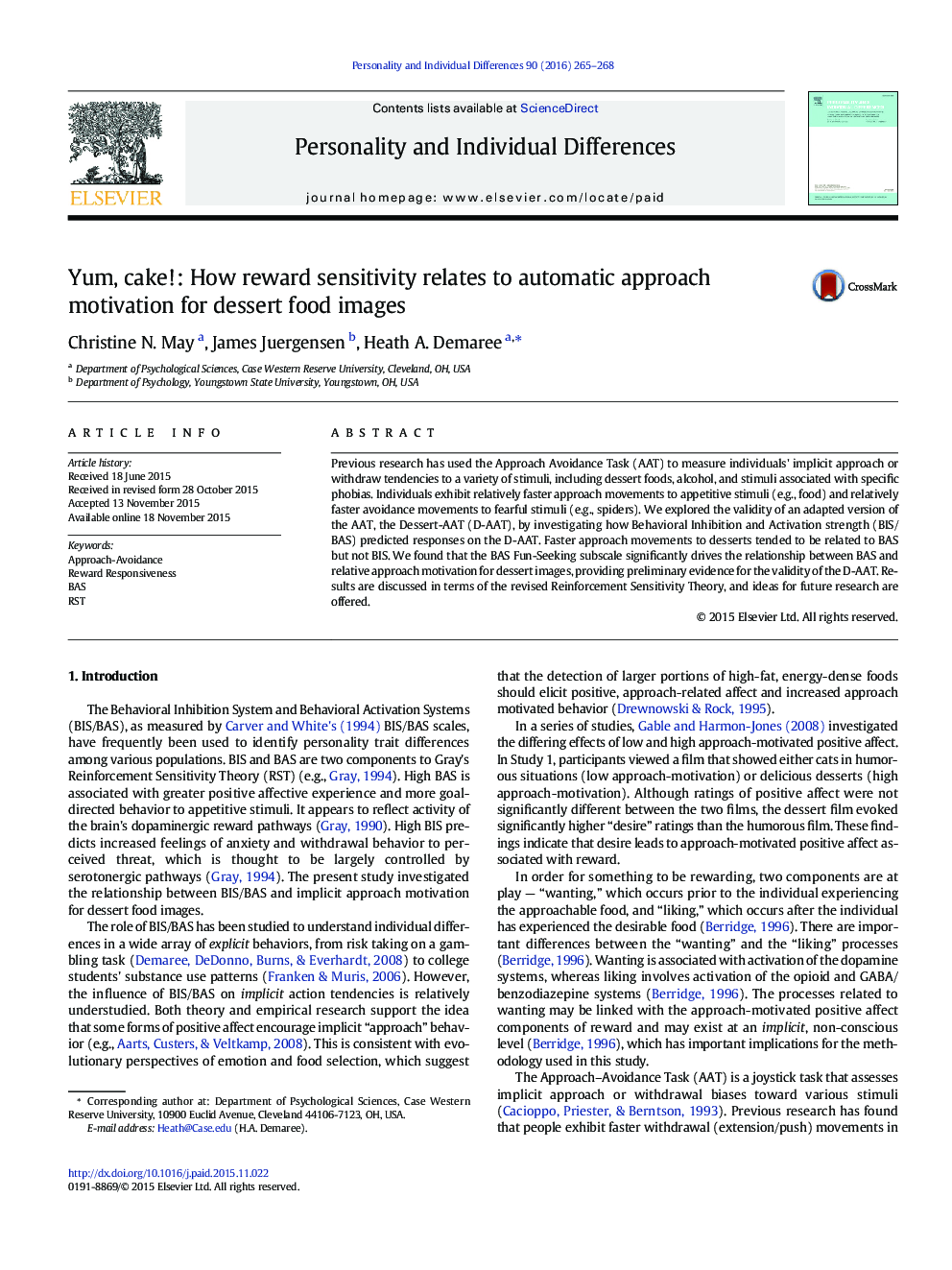| Article ID | Journal | Published Year | Pages | File Type |
|---|---|---|---|---|
| 889857 | Personality and Individual Differences | 2016 | 4 Pages |
•Preliminary validation of the Dessert-Approach–Avoidance Task (D-AAT)•BAS tended to be related to automatic approach motivation for dessert images.•BAS-fun seeking predicts automatic approach motivation for dessert images.•Results provide support for revised Reward Sensitivity Theory (rRST).
Previous research has used the Approach Avoidance Task (AAT) to measure individuals' implicit approach or withdraw tendencies to a variety of stimuli, including dessert foods, alcohol, and stimuli associated with specific phobias. Individuals exhibit relatively faster approach movements to appetitive stimuli (e.g., food) and relatively faster avoidance movements to fearful stimuli (e.g., spiders). We explored the validity of an adapted version of the AAT, the Dessert-AAT (D-AAT), by investigating how Behavioral Inhibition and Activation strength (BIS/BAS) predicted responses on the D-AAT. Faster approach movements to desserts tended to be related to BAS but not BIS. We found that the BAS Fun-Seeking subscale significantly drives the relationship between BAS and relative approach motivation for dessert images, providing preliminary evidence for the validity of the D-AAT. Results are discussed in terms of the revised Reinforcement Sensitivity Theory, and ideas for future research are offered.
